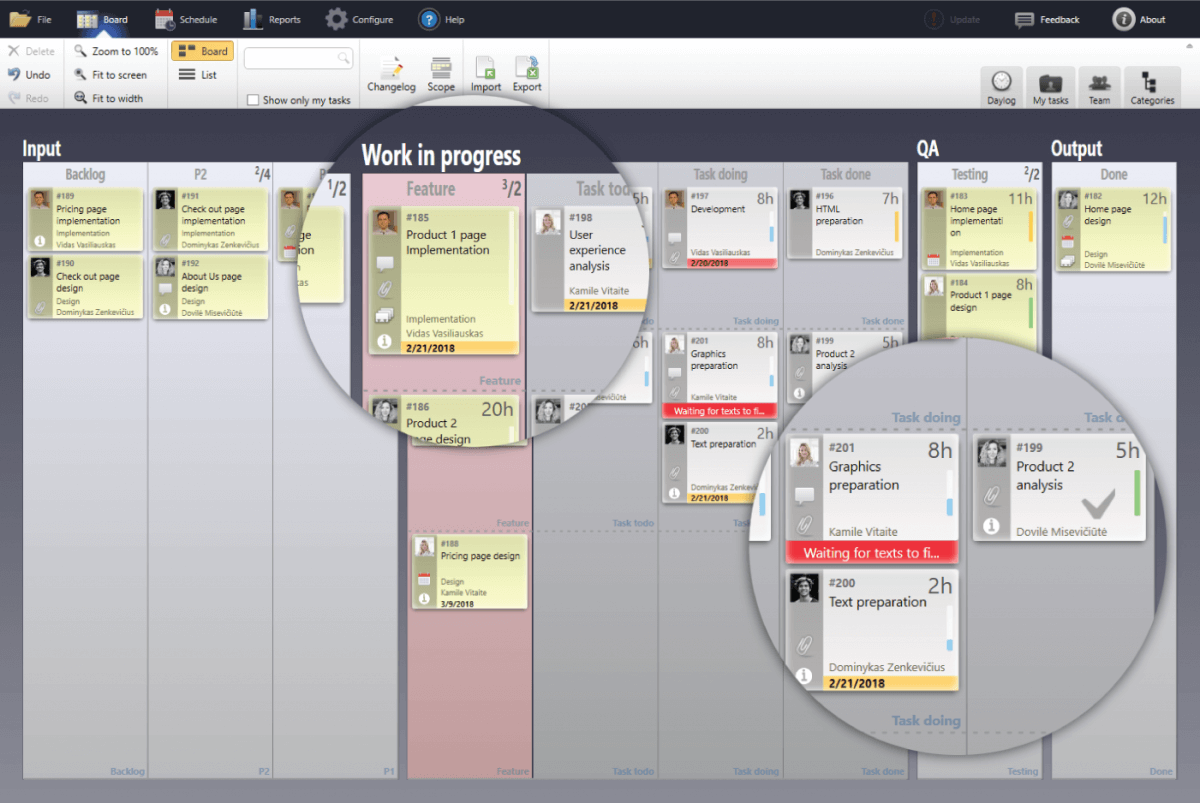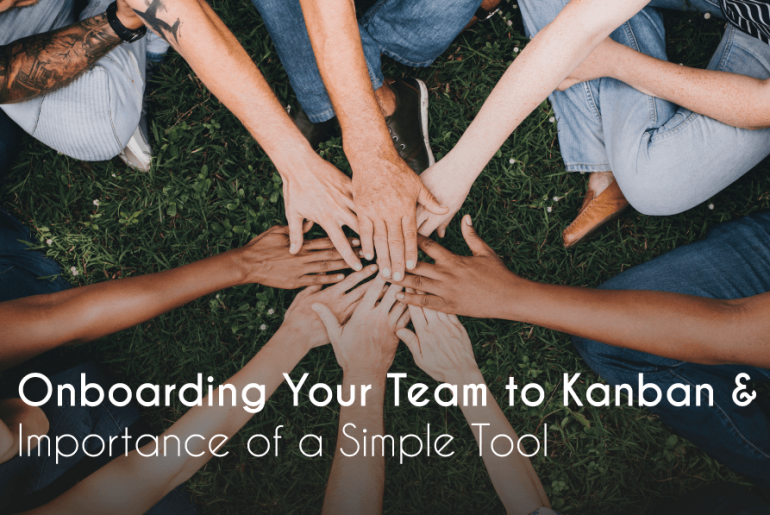Making any change in the way your team works can be a challenge. However, if you are set on changing your process to Kanban, there are ways to make it smoother and ensure your team accepts the new order. Curious to know how to successfully onboard your team to Kanban? Keep on reading.
Introducing Kanban
Without a doubt, Kanban is an excellent option for those needing flexibility and adaptability in their project management. However, just saying this is the way our team works from now on is not enough. If you want Kanban to work for you, first you have to work for Kanban. These four steps will help you make the smooth transition we all seek.

1 – Communicate the reasons behind the switch
To make sure your team agrees to make a switch to Kanban. First, they need to know about it. Approach this in a manner where everyone feels and knows why Kanban will be the best choice or why you have decided to try it out.
Whether you have severe and reliable reasoning behind it or just feel like it could be a great fit, make sure your team is on the same page. They will be much more accepting and open to the idea of Kanban if you are open and honest with them. The worst thing you could do in this situation simply imposes the new method on them without any explanation.
2 – Start simple
Once you have explained the change to your team it is time to take action. You may be tempted to go ahead and transfer all the intricacies of your current process into Kanban, but my advice is to refrain.
Instead, take on the standard Kanban board, the usual process and start from there. Add your tasks, team members and start working. This way, you will get to know and get used to the method before trying to make any changes and adaptations. Nonetheless, there will be many uncertainties and questions at the beginning. Still, this way, you will be able to follow the original process and will deal with them much more comfortable.
3 – Identify custom needs for your team
Once you have run a few iterations and feel that your team knows how the Kanban method works, you can start looking for the new things you need to add. For most organisations, just the original tools will not be enough, and you will have to adjust and modify the process steps, board and other things to have everything you need.
While you should be careful about changing the board and the process at first, once your team gets the hang of Kanban, this is encouraged. To use Kanban long term, you will have to come up with a board and process that suits all of your needs. Otherwise, you will be looking for yet another project management method soon enough.
4 – Don’t be afraid to evolve and adapt Kanban to your needs
Lastly, if you feel like just the Kanban approach is not enough for your team, keep in mind that mixing and matching various project management methods works wonders for many organisations.
Look into mixing Kanban and Scrum for a tested Agile application or venture out and create your blend to suit your team preferences. Kanban is all about adaptability to the situation. Your process should evolve along with your team instead of staying the same through and through.
Choosing the right tool
As with any change, it is essential not only to communicate why but also to show how you are going to do it. Here, a simple and understandable Kanban tool comes into action and can become a great asset in your transition.
When looking for something to use with your Kanban newbies, you should focus on three key aspects – ease of use, functionality and integration with other essential tools. While this may seem very simple at first, missing anyone could mean your team rejects not only the device but the practice itself. Let me explain.

1 – Ease of use
Remember any time you were faced with a new thing in your life. Better yet, a new idea that you were not looking for, but had to do or use regardless. There was a little frustration, right? Your team may feel just the same about Kanban and any new tools you ask them to use. Therefore they must see the value and ease of use right away.
Choose something similar to what your team already uses for managing projects or look for such staples as the ability to customise your board view and clear information visualisation.
2 – Function
Another essential thing to look for in the tool you choose is the functionality. While at first, it may seem like all the tools have the same functions; in reality, they offer different benefits. Sit down with your team and figure out what are your must-haves for the new solution. This quick meeting will help you narrow down the tool list considerably.
Once you have the main functionality round over, see what is left and pick a tool that also holds the nice-to-haves or simply feels like it will work for your needs. It is widespread for teams to choose a solution based on recommendations or popularity, but neglecting to check that all their basic needs are met. This results in them having to look again in a few months.
3 – Compatibility
Lastly, if there are any tools that you already use daily, make sure they are compatible with your new pick. You will save precious time and money in the future if you pick a solution that can integrate your e-mail, for example. Converting e-mails into tasks immediately and thus not having to worry about losing any vital information.
When making a change to Kanban, keep in mind, not only the logistics of adopting a new method but focus on the morale of your team. Make them feel enjoyable and comfortable with the change by not rushing it and choosing tools that are just what your process needs. This way, you will be using Kanban not only for a few months but for years to come.





